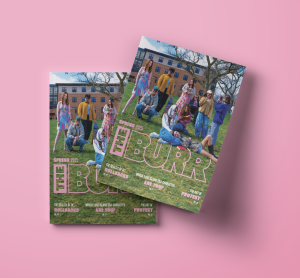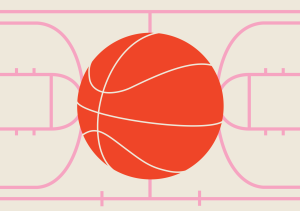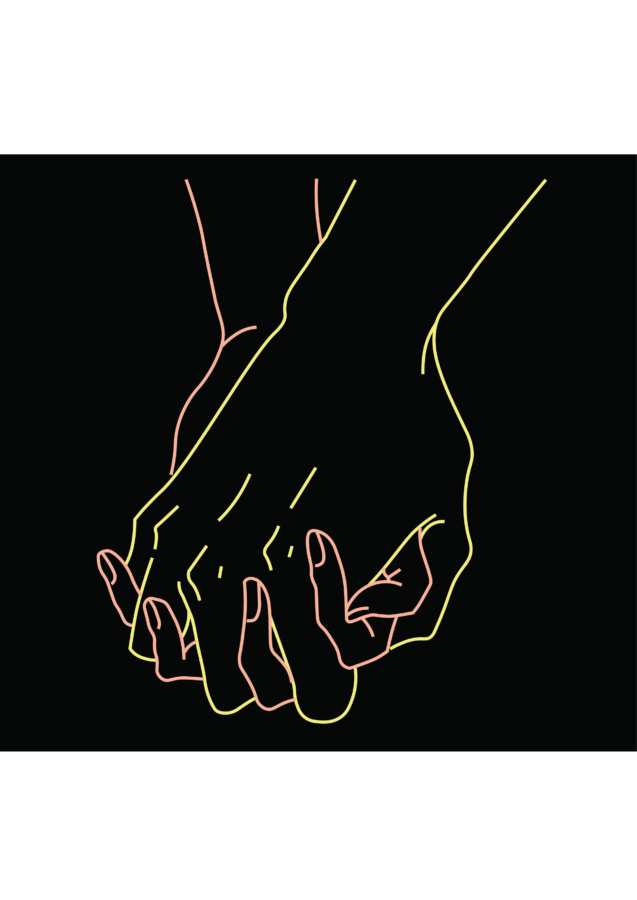Illustration by Jocelyn Burton
Featured image by Sharon McCutcheon from Pexels
Last time on Growing Up Gay, I spoke a little bit about the discomfort I felt in the perceived “normal” aspects of high school culture, such as going to homecoming in traditionally feminine clothing. This time, I want to focus on the awkwardness of transitioning through adolescence to adulthood. We all felt it and we all know it, but let’s take a nostalgic trip down memory lane by examining some of those unnecessarily gendered and heteronormative aspects of growing up.
Now this may just be my experience, but in my small town, everything was separated by gender roles: what sports you could play, what extracurriculars you could participate in, etc. An example of this is especially prominent when I think about the attitudes surrounding athletics at my school. I was the awkwardly tall girl in sixth grade who everyone thought would end up in sports simply because of my height. I tried volleyball initially but inevitably ended up getting hit in the head every time I rotated into the first row, because every girl behind me couldn’t hit the ball high enough to go over the net, let alone miss my head. This year in school was incredibly awkward, because it was the first time we learned about the joys of puberty and that fundamentally, boys and girls must “think differently” because our bodies are different. We learned that girls’ brains are “like waffles,” and boys’ brains are “like spaghetti,” because girls can compartmentalize, but boys are stream-of-consciousness-type thinkers. We all knew this was an excuse to place blame on girls for overthinking and being “hysterical” and make excuses to “let the boys be boys.” Still, strangely, nobody acknowledged any of it as being fraudulent or distorted. This was the year the adults in the room categorized us as merely being different from one another.

After that fateful day of separate video lessons, the girls learned just how much responsibility fell on them to manage their experiences with boys within the new world they lived in. The boy’s group, after a short video session, went outside to play football together. As for the girls’ group? We stayed indoors for a grueling afternoon of humiliating and terrifying video lessons about what happens when you get “that time of the month” in public or what happens when you flush sanitary products down the toilet. Each group returned to their respective classrooms later in the afternoon with kits for navigating puberty. Boys received Old Spice deodorant and Axe body spray, while the girls received “discrete” bright pink and purple baggies full of pads and tampons. As we came back together in the classroom, we all knew things weren’t the same. This metamorphosis was underscored in memory as the year that the body spray smell wafted through the halls. As for the girls, we became outcasts who at “that time of the month” would be seen vastly different by their male peers. The confidence that once shot through us and out into the world was now a distant memory replaced by feelings of guilt, shame and general “other-ness.” As for athleticism — only those who were exceptionally good at hiding their newfound shame made it through to become like “one of the boys” again.
When it came time to choose other sports that didn’t involve the possibility of constant head injury or the embarrassment of now being starkly female in the swaths of boys, my mind gravitated toward running, but this too had its pitfalls. At first, I enjoyed it. I felt stronger. I felt good. But then, seeing the muscles beginning to protrude from my legs, I felt that pang of self-consciousness again. I wasn’t getting thin and cute like “other girls” who ran. I was bulking up, and on top of that, I was getting curvy in places I never wanted to be. Eventually, the shin splints are what stopped me from running track any further. But that short period in seventh grade when I felt confident enough to try to be athletic was once more ultimately sullied by the feeling that I had to fit in with my perception of the body type of a runner: thin and lanky, more so than the association with the strength it takes to endure those miles.
In the following years, I stuck to running on the track and treadmills alone after school, and I began to see the benefits of lifting weights. But again, there was a consciousness of gendered spaces when it came to exercise. At my high school, there were two rooms for fitness. One was effeminately named “the fitness center,” and the other was boldly called “the weight room.” The fitness center was full of cardio equipment like stationary bikes, treadmills, ellipticals and rowing machines. It had some weight machines, but they weren’t up to snuff compared to those heavy duty-looking ones in the weight room. The weight room was known to be the frequented hangout spot for the wrestlers. These boys would spend every waking moment they could lifting — away from the classroom and away from any female — except for those who dared follow them in. In our junior year, it was a requirement to explore the throes of the weight room. We were shown proper lifting techniques and encouraged to lift weights because strength-building could holistically benefit our bodies. I was excited to finally learn how to properly create sets for myself and learn proper techniques on machines I hadn’t been brave enough to try out before, but when it came time for the class to get into action, the majority of girls (but not all) wandered back to the fitness center for some light jogging and sets on the less-desirable equipment. I felt stuck. I didn’t want to be without backup if something embarrassing happened around all of the guys, but I also didn’t want to give in to the thought that the girls were too weak to lift the “real weights.” And so half of the time, I stayed. Some days were too uncomfortable, but slowly, some of the other girls started staying also.
By the time my senior year rolled around, my friends and I decided not to care about that stigma anymore. We would lift those “real weights” with the guys and have fun too. The guys also didn’t seem to care about our intrusion on their male-dominated space by the end of our time together. We spotted each other, shared playlists and joked about the seemingly all-important things we cared about then. By this time, I had come out about my sexuality and was dating my current girlfriend. Between my reclamation of unnecessarily gendered athletic spaces and the confidence of being myself finally, it was my best year yet when it came to feeling enough to take up space. I began healing from the body image issues that plagued me my entire life, but it was just that: a beginning.
Today, I still struggle with the thought of allowing myself to take up space in general, especially in places that are traditionally separated by gender. I’ve never felt comfortable limiting myself to one side or another because I’ve genuinely felt outside of each category my entire life. It’s taken time to realize that, though, and I’ve still got a long road ahead of me when it comes to dealing with identity, shame and being comfortable as myself. But like others have told me, I want to say to you: you are enough, and it’s okay to take up space. Don’t let the limitations of gender, embarrassment or fear stop you from doing so, because for me, journeying into those grey areas has been empowering, mindful and so worth it.













